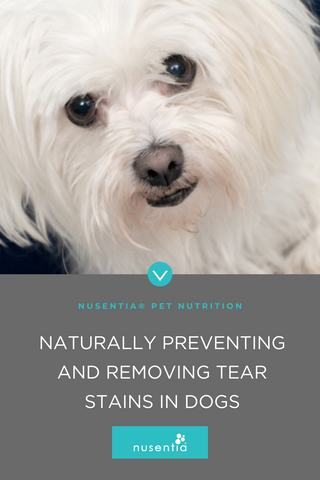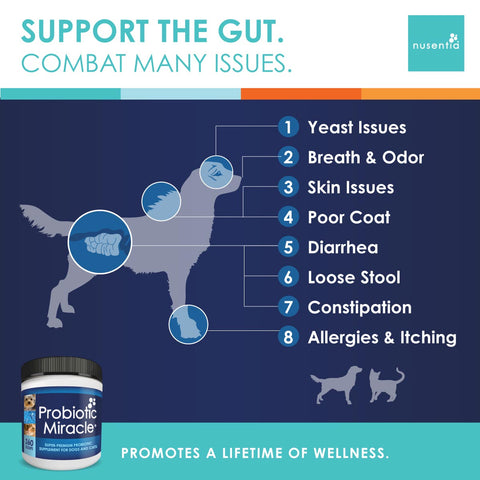Dog tear stains, characterized by brownish-red discoloration beneath the eyes, are a common concern for pet owners. These stains result from excessive tearing, but the good news is that natural prevention and removal methods are available, offering a safer alternative to antibiotics like tylosin.
In this guide, we'll help you understand and address the underlying causes of tear staining, which extend beyond breed and genetics. This is crucial for effective management. This article explores natural strategies for preventing and removing dog tear stains, ensuring your furry friend maintains a clean and healthy appearance

Possible causes of dog tear staining
Tear staining can be frustrating to deal with, and some breeds are more prone to tear stains than others. But as we stated at the outset, it often goes beyond breed (and genetics), here are some of the possible culprits for tear staining:
- Yeast overgrowth
- Infections
- Allergies
In dog's with white or light fur (like Maltese dogs or Bijon Frise), it is easy to recognize tear staining. In dogs with darker coloring, look for watery eyes, excessive itching, and excessive tearing. The reddish coloring is indicative of yeast and is a sign that yeast is overgrowing within your dog's body and expressing itself through the eye tears.
Preventing Tear Stains with Antibiotics
What about tear stain products that contain Tylosin or Tartrate?
Be cautious of products that contain these ingredients. Tylosin is an antibiotic and may not be appropriate for your dog. While short-term use may reduce the reddish brown tear stains for your dog, the product will not address a long-term solution and may harm gut health in the long run.
A Natural Approach to Prevention and Removal of Tear Stains on Dogs
For a natural approach to getting rid of tear staining, work from the inside out by improving your dog's nutrition:
- Give your dog probiotics to help get rid of the yeast issues underlying the cause of the tears
- If your dog is showing some signs of allergies with itchy and watery eyes you may want to consider using a nutritive skin and coat formula such as Dermix™, an allergy and immune system support chew, which contains omega-3 fish oil, as well as antioxidant compounds beta-carotene, bioflavonoids, vitamins C and E, selenium, and sulfur-containing amino acids. These nutritive ingredients are valuable in protecting the body from the tremendous increase in free radicals that takes place during an inflammatory process.
Our Recommendation for Dog Tear Staining
When your dog has excessive tears and tear staining, it is an opportunity to improve his overall immune health. There is concern with popular products for dog tear stains containing Tylosin, an antibiotic. Tylosin products may not be appropriate for long-term use for this reason and may have negative side effects with extended use. As many people have come to learn, antibiotics should be used sparingly and only when necessary. Here are a couple of measures you can take to improve your dog's immune response with no negative side effects:
1. PROBIOTICS
Give 2x to 3x the recommended dosage of Probiotic Miracle® for 1 week, then continue with regular dosage as a wellness program (refer to the dosage chart on the canister according to your dog's weight). By supplying healthy flora to your dog's gut, it will reduce the reddish brown tear stains that are the result of yeast overgrowth.
2. DERMIX
Supplement with Dermix™ each day. Dermix contains antioxidant compounds such as beta-carotene, bioflavonoids, vitamins C and E, selenium, and sulfur-containing amino acids, which are needed to protect the body from the tremendous increase in free radicals that takes place during an inflammatory process.
Not only will your dog look better, but more importantly they will be healthier, and they will feel better.
Related: How to Attack the Yeast Beast
For natural, trusted pet health supplements with proven formulas to improve your furry friend's overall health, visit Nusentia, a brand trusted by veterinarians and pet parents alike since 2008.




